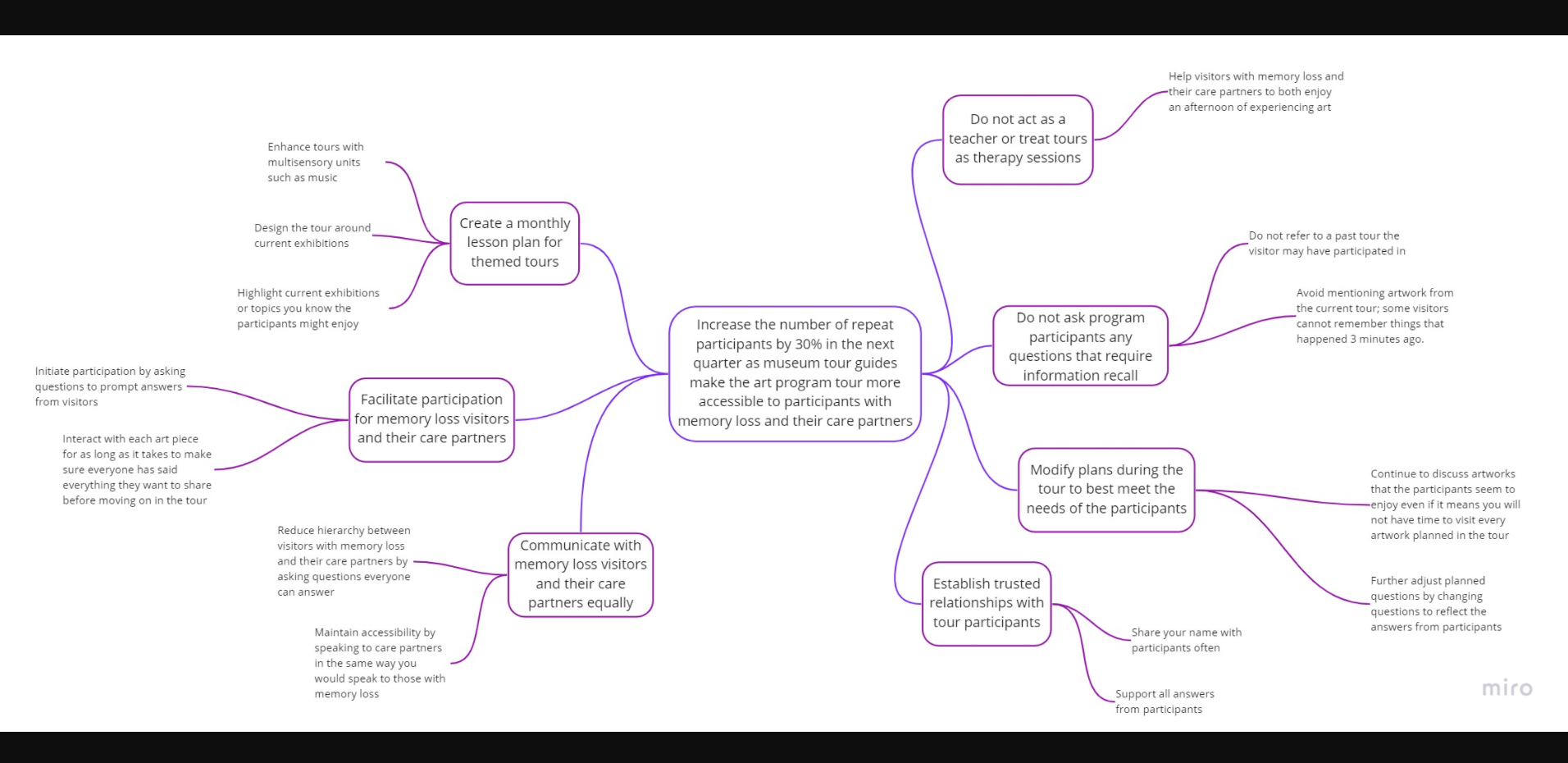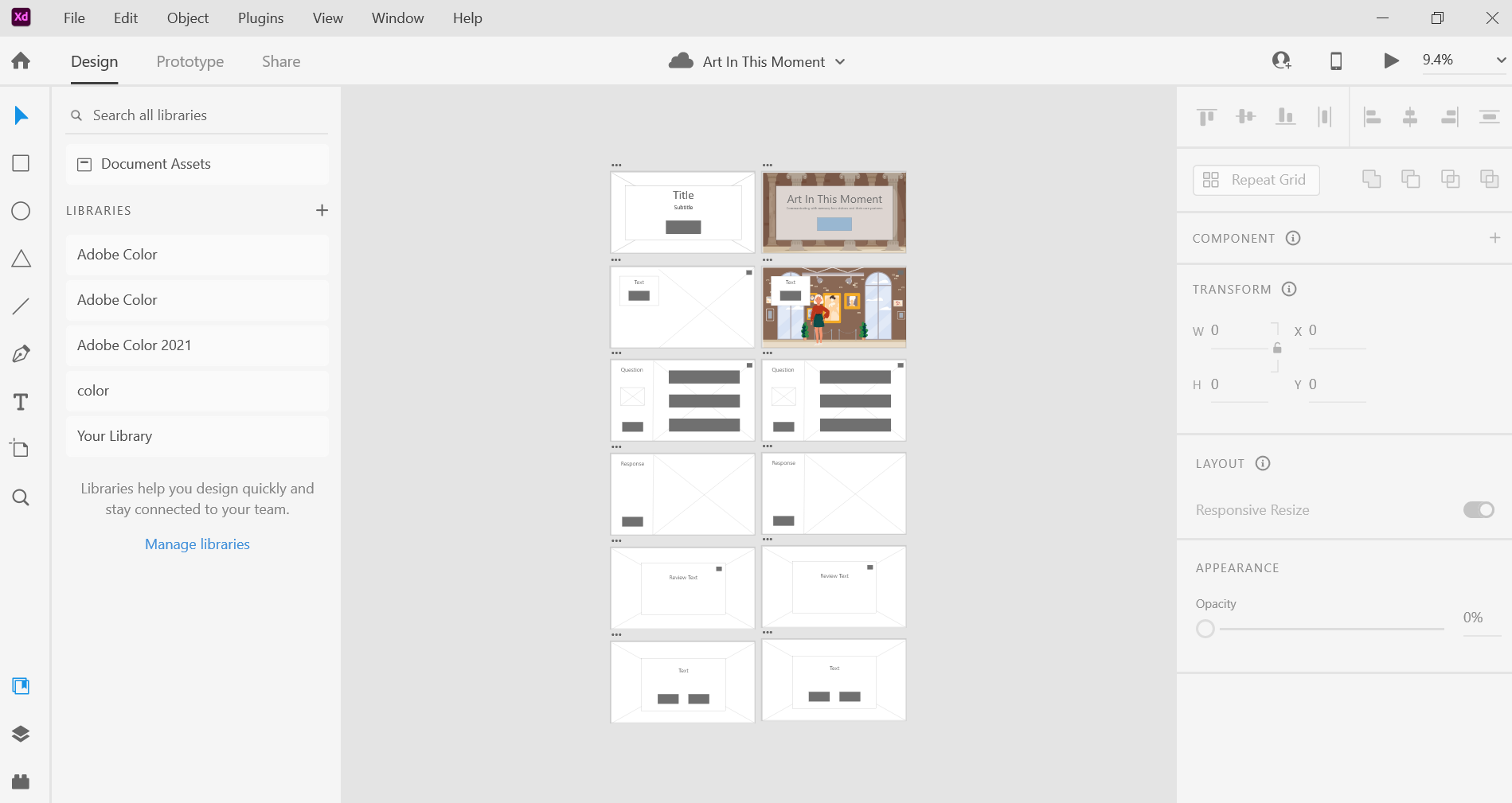Art In This Moment
Tools Used: Articulate Storyline 360, Adobe Illustrator, Adobe XD, Miro
Overview
This is a concept scenario-based simulation that was inspired by a job I loved: security guard for the Dayton Art Institute. I wanted to combine my love of museums with my passion for accessibility. While researching accessibility in museums, I found that many museums across the United States have programs dedicated to visitors with memory loss.
Even though this is a concept piece, I want the scenarios and visitors’ reactions to be accurate. I decided to reach out to several museums in search of SMEs, emailing my questions about their memory loss programs. Amazingly, this gave me several Zoom meetings with the Directors of Accessibility from The Brooklyn Museum, Museum of Fine Arts in Boston, and The Smithsonian. Between virtual cheering with our coffee mugs, and crying and laughing while listening to their personal stories with visitors with memory loss, they gave me great guidance for this piece.
Client and Audience
The client is an art museum in a city. The museum Leadership Team (which includes 5 people from C-Suite and Directors) is focusing on improving accessibility at the museum. One way they are doing this is by looking at the community demographics and needs. They have created a new program for visitors with memory loss and their care partners during days/hours when the museum is closed to the public. They wish to continue to grow and create community outreach programs.
The audience will be the museum tour guides. Some tour guides have been with the museum for a while, others are new. All have had minimal training about memory loss.
Problem and Solution
The tour guides know the facts about memory loss, but they lack the communication skills with memory loss visitors. Since they are not communicating effectively, the museum has been receiving bad reviews on surveys and complaints from caregivers about tour guide communication. Poor communication can also cause negative responses from visitors while in the museum. This leads to the loss of current visitors and hinders the museum's efforts to grow its community outreach programs.
Museum tour guides currently receive mandatory training about different disabilities, but this training is focused on memorizing definitions. This eLearning scenario will give guides the soft skills needed to make the museum a safe space for visitors and care partners. This simulation will have the user guide a memory loss program from beginning to end. The success of this eLearning will be measured against the goal of increasing the number of repeat participants by 30% in the next quarter as museum tour guides make the art program tour more accessible to participants with memory loss and their care partners.
Process
Action Map
I created the action map based on Cathy Moore’s Map It. I used the framework of Bloom’s Taxonomy to create an action map of the specific actions the tour guides need to take and details of what each action successfully looks like. I created this action map using Miro.
Text-Based Storyboard
I wrote the text-based storyboard in Google Docs. I wanted to be as detailed as possible during this process so I would know exactly what to develop in the scenario, including the visual notes and programming notes.
Portion of my text-based storyboard
Wireframes
For me, writing and drawing out my ideas by hand is a must. I drew the wireframes on index cards to get an understanding of the visuals for this project.
Next, I am creating the wireframes in Adobe XD. The next step in XD will be iteration.
Visual Assets
I have started creating the characters for this scenario. I found images on Freepik.com, and I am currently in the process of editing the vector images in Adobe Illustrator.
Original image from Freepik.com
My current character work
Continued Development
I am currently still working on Art In This Moment, so check back for the completed project!
When my visuals are finished and I have successfully iterated in Adobe XD, the interactions for this simulation will be built in Articulate Storyline 360.









